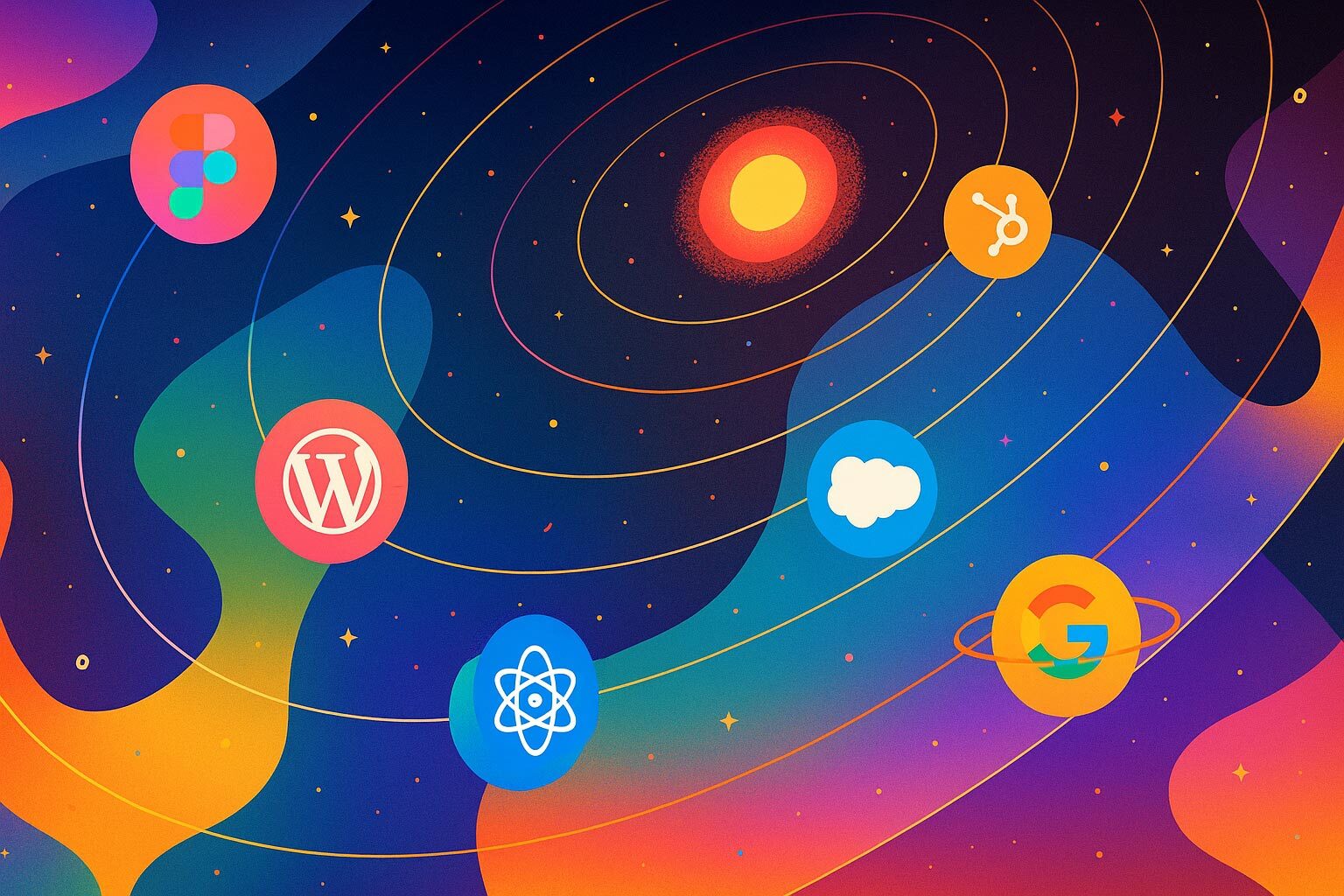3 Strong Reasons Why Your Business Needs a Design System
Read Time 4 mins | Written by: Antonio Guedes

Design Systems can be very time-consuming at first. But, once implemented, it's like a bullet train to digital product development.
Transforming Chaos into Harmony with Design Systems for Dreamlike Business Operations
Whether you're a nimble startup, a growing small company, or an expansive enterprise organization, the adoption of a design system emerges as a critical pivot point for the success of any brand. If you are in charge of managing digital products or empowering design and development teams to rapidly deliver exceptional experiences, you need consistency and efficiency working together, and that is only possible with a single source of truth. A design system transcends the concept of a mere brand book or a collection of guidelines. Imagine it as a dynamic, living entity—a unified repository of principles that streamlines the design, management, and deployment of brands, applications, products, and services across various scales.
Now that you know the essence of a design system extends beyond the traditional confines of styleguides or pattern libraries, let's dive deeper. To unveil the tangible impact a design system can have on your business, we explore three compelling benefits that stem from its adoption.
1. A Single Source of Truth
As the number of devices, browsers, and platforms continues to increase at a staggering rate, the need to create consistent, deliberate interface design systems is becoming more apparent than ever. Also, documentation is what separates a pattern library from a true system that can set the rules for each component, such as color, typography, sizing and space, and when to use them properly. Finally, as a product that serves other products, a design system is a one-stop-shop to manage brand and UX components, coded elements, detailed documentation, and more so teams can stay in sync.
However, the value of a design system isn't confined to a labyrinth of technical jargon. When properly configured, platforms like Figma or Sketch can become pivotal in your workflow, interlinking with various tools to streamline the entire production process. This seamless integration, from design to development, is facilitated by the strategic use of design tokens, reducing friction and enhancing efficiency. It's not just about creating a unified design language; it's about crafting an ecosystem that accelerates and simplifies the journey from concept to execution.
2. Save Time & Money
Design systems indeed have a significant financial impact on development teams and UX/UI designers, streamlining workflow and fostering innovation. The implementation of a design system can lead to substantial time savings in product development. While specific numbers may vary based on the organization's size and scope, the general consensus is that adopting a design system can save about 25% of the time for a typical, large task in product development.
Calculating the return on investment (ROI) of user experience work involves determining how design changes can impact business goals like revenue, cost savings, or other key performance indicators. This calculation is crucial for building buy-in, as it demonstrates that UX isn't just beneficial for users but also very good for the business. However, it's important to remember that these calculations are estimates and not exact figures. For instance, a redesign that improves employee efficiency doesn't necessarily translate directly to monetary savings but can indicate potential profitability due to increased productivity.
Moreover, the ROI of design calculations can draw from various fields, including finance, decision models, marketing analytics, and even machine learning. These calculations are complex and often require sophisticated financial modeling. For instance, a comprehensive design system means design teams don’t have to start from scratch for every project. They can use the system to quickly build prototypes using approved elements, which leads to faster time-to-market for new products and features, fewer errors, easier onboarding, and better collaboration between teams and departments. The improved consistency also results in a better customer experience. It's important to measure key performance indicators (KPIs) such as team efficiencies, speed to market, and the effect on code to track a design system's performance over time.
While the financial benefits of design systems are clear, the exact figures can vary. The key is to understand these systems' impact on overall productivity and efficiency, which ultimately contribute to a business's financial health.
3. Consistency
As your company scales, the complexity of product development and branding evolves alongside it. Leveraging modular components, like design tokens, ensures that style updates are uniformly applied across your entire portfolio of projects or products. This approach not only guarantees consistency but also enhances efficiency.
Conducting a visual audit of your current designs, whether they pertain to an app, a website, or any other digital application, is a strategic move. Such an audit allows for a comprehensive inventory of the components in use, offering valuable insights into the effectiveness and alignment of these elements with your brand's aesthetic and functional goals.
Furthermore, this meticulous inventory helps in precisely gauging the scope and scale of upcoming projects. By understanding the resources at hand and how they are currently utilized, you can make informed decisions, accurately estimate the effort needed for new initiatives, and strategically allocate resources. This approach is crucial in maintaining brand consistency while efficiently managing the growth and diversification of your product line.
Conclusion
Boost team productivity with UX design that works seamlessly for everyone.
Antonio Guedes
Antonio Guedes is a Lead Product Designer with a knack for making tech approachable and fun. He's seasoned in guiding tech teams through the maze of bridging the gap between design and development, crafting user-centric designs that not only look good but work smartly. At PHRUTOS, his approach is all about blending creativity with practicality, making the complex world of tech a little more relatable.